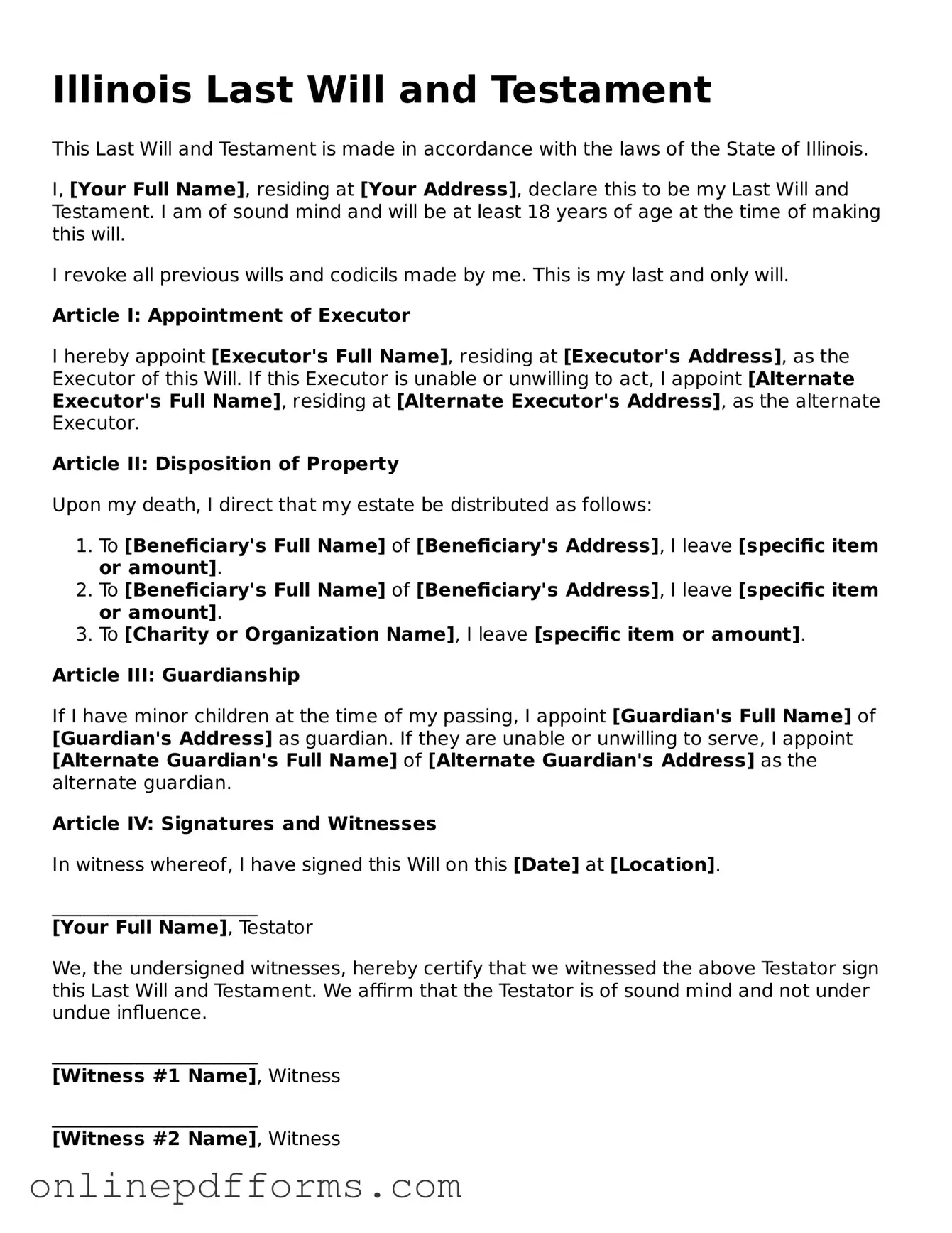The Illinois Last Will and Testament is similar to a Living Will, which outlines an individual's preferences regarding medical treatment in case they become unable to communicate their wishes. While a Last Will deals primarily with the distribution of assets after death, a Living Will focuses on healthcare decisions, ensuring that one's medical preferences are respected during life. Both documents serve to express personal wishes and protect individual rights, but they operate in different contexts—one in life and the other after death.
Another document akin to the Last Will is a Trust. A Trust allows for the management of assets during a person's lifetime and can continue after their death. Unlike a Last Will, which typically goes through probate, a Trust can help bypass this process, allowing for a more private and potentially quicker distribution of assets. Both documents aim to ensure that a person's wishes regarding their property are honored, but they differ significantly in terms of administration and timing.
A Power of Attorney (POA) is also similar, as it grants someone the authority to make decisions on behalf of another person. While a Last Will takes effect after death, a POA is active during a person’s lifetime, especially if they become incapacitated. This document is crucial for managing financial and legal matters, whereas a Last Will focuses solely on asset distribution. Both empower individuals to designate who will make decisions in their best interests.
A Living Trust shares similarities with the Last Will in terms of asset management and distribution. However, a Living Trust is established during a person's lifetime and allows for the transfer of assets without going through probate. This can lead to a smoother transition for heirs. While both documents aim to ensure that a person's wishes are honored, a Living Trust provides more flexibility and control during the grantor's life.
A Codicil is another related document. It serves as an amendment to an existing Last Will and Testament, allowing individuals to make changes without creating an entirely new will. This can include updates to beneficiaries or asset distributions. Both documents must be executed with the same formalities as a Last Will, ensuring that the individual's intentions are clear and legally binding.
A Declaration of Trust is similar in that it outlines how assets should be managed and distributed, but it is often used in conjunction with a Trust. This document specifies the terms and conditions under which the Trust operates. While a Last Will focuses on post-death asset distribution, a Declaration of Trust addresses the management of assets during the grantor's lifetime, providing clarity and guidance for trustees.
In California, when engaging in the sale of a horse, it's essential for both the buyer and seller to be aware of the legalities involved, including the necessity of a Horse Bill of Sale. This document ensures that all relevant information about the transaction, such as the horse's identification and the sale terms, is recorded clearly to protect both parties. To learn more about how to appropriately document this transaction, interested individuals can visit https://californiapdf.com.
A DNR (Do Not Resuscitate) order, while primarily a medical directive, shares the intent of ensuring personal wishes are honored. It specifies that a person does not wish to receive life-saving treatment in certain situations. Like a Last Will, a DNR reflects an individual's values and preferences, but it is focused on healthcare decisions rather than asset distribution. Both documents empower individuals to control their circumstances in critical situations.
Lastly, a Healthcare Proxy is similar as it designates someone to make medical decisions on behalf of an individual if they are unable to do so. While a Last Will addresses asset distribution after death, a Healthcare Proxy is active during a person's life, ensuring that their healthcare preferences are respected. Both documents highlight the importance of personal choice in critical matters, whether in health or estate planning.
